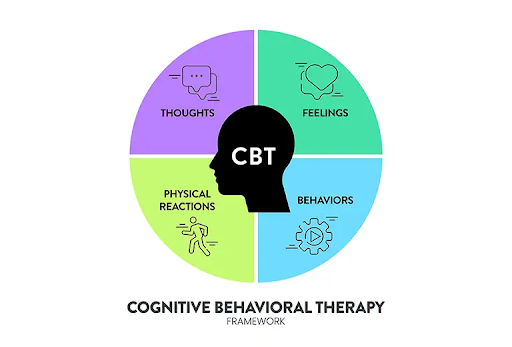Can I Take Zepbound a Day Early?
Key TakeawaysZepbound is a once-weekly injectable medication for weight management and obstructive sleep apnea (OSA) linked to obesity.Taking Zepbound a day early is [...]
Read More
Medically reviewed by Abhijit Bhattacharyya | MD, PhD, MBA, Tufts University School of Medicine - Miami, Florida on June 14th, 2025.
Anxiety disorders are among the most common mental health conditions, impacting millions of people across the globe. As public understanding of mental health continues to grow, one important question arises: Can anxiety be classified as a disability? This article explores that question by examining the different types of anxiety disorders, their effects on everyday life, and the legal criteria used to determine disability status.
 Understanding Anxiety Disorders
Understanding Anxiety DisordersAnxiety disorders encompass a broad spectrum of conditions, all characterized by excessive fear or worry. These disorders can manifest in various forms, including:
Generalized Anxiety Disorder (GAD): Persistent worry over everyday situations.
Panic Disorder: Sudden panic attacks with symptoms like heart palpitations and breathlessness.
Social Anxiety Disorder: Intense fear of social interactions and potential judgment.
Specific Phobias: Extreme fear of particular situations or objects, such as flying or heights.
Each condition can interfere with quality of life in unique ways, often affecting relationships, work performance, and emotional well-being. In many cases, anxiety begins in adolescence or young adulthood, though it can arise at any stage of life.
Treatment options such as Cognitive Behavioral Therapy (CBT), medications, mindfulness, and lifestyle modifications are often effective in managing symptoms. Doctronic.ai can help individuals understand their symptoms and explore possible treatment paths—all from the comfort of their homes.
The effects of anxiety disorders can be profound, affecting various aspects of life, including work, relationships, and overall well-being. Individuals may experience difficulties concentrating, maintaining relationships, or performing daily tasks due to their anxiety. The constant state of worry can lead to physical symptoms such as fatigue, headaches, and gastrointestinal issues, further complicating daily functioning. As anxiety manifests in different ways for each person, it becomes crucial to understand its multifaceted nature and how it can disrupt everyday life.
In the workplace, anxiety can lead to decreased productivity and increased absenteeism. Individuals may struggle to meet deadlines, participate in meetings, or engage with colleagues due to overwhelming anxiety. This can result in a cycle of stress and anxiety, further exacerbating the condition. The fear of making mistakes or being judged can create a paralyzing effect, causing individuals to avoid taking on new responsibilities or seeking promotions. Additionally, workplace cultures that lack understanding and support for mental health can intensify feelings of inadequacy and isolation, making it even harder for those affected to seek help or accommodations.
Socially, individuals with anxiety may withdraw from interactions, fearing judgment or embarrassment. This isolation can lead to feelings of loneliness and depression, compounding the challenges faced by those with anxiety disorders. The avoidance of social situations, such as gatherings or even casual outings, can create a significant gap in social networks, leaving individuals feeling disconnected from friends and family. Moreover, the fear of social scrutiny can prevent individuals from forming new relationships, leading to a cycle where anxiety feeds into social withdrawal, further limiting their support systems. Over time, this can create a pervasive sense of helplessness, making it essential to foster environments that encourage open discussions about mental health and provide avenues for support and understanding.
In determining whether anxiety qualifies as a disability, it is essential to consider legal definitions. In many jurisdictions, disability is defined under laws such as the Americans with Disabilities Act (ADA) in the United States, which provides a framework for understanding what constitutes a disability. This legal context is crucial, as it not only influences how individuals perceive their own conditions but also affects the accommodations they may seek in workplaces, schools, and public services.
The ADA defines a disability as a physical or mental impairment that substantially limits one or more major life activities. These activities include working, learning, communicating, and socializing.
To determine if anxiety qualifies as a disability, evaluators typically consider:
The severity of the symptoms
The duration and consistency of impairment
How much does the condition limit major life activities
A documented diagnosis and consistent impact on functioning are often needed to meet the legal threshold. Doctronic.ai helps determine whether your symptoms may warrant further evaluation or legal accommodations.
To determine if an anxiety disorder qualifies as a disability, the following factors are typically considered:
The severity of the anxiety symptoms.
The duration of the symptoms and their impact on daily functioning.
The extent to which the symptoms limit the individual’s ability to perform major life activities.
If an individual's anxiety disorder meets these criteria, it may be classified as a disability under the law, granting them certain protections and accommodations. Furthermore, the evaluation process often involves healthcare professionals who can provide documentation and assessments to support the individual's claims. This documentation is critical, as it can help establish the legitimacy of the anxiety disorder and the need for specific accommodations, such as flexible work hours or the option to work from home.
When anxiety is classified as a disability, individuals may be entitled to reasonable accommodations in various settings, including the workplace and educational institutions. These accommodations aim to support individuals in managing their anxiety while allowing them to perform their duties effectively. It is essential for employers and educators to recognize that anxiety disorders can manifest in various ways, affecting concentration, social interactions, and overall performance. By understanding the unique challenges faced by those with anxiety, institutions can create supportive environments that promote well-being and productivity.
Flexible work hours or remote work options to reduce stress.
Quiet workspaces to minimize distractions and anxiety triggers.
Access to mental health resources and support services.
Employers are encouraged to engage in an interactive process with employees to determine appropriate accommodations based on individual needs and circumstances. This process not only helps in identifying specific accommodations but also fosters open communication, which can alleviate some of the anxiety associated with discussing mental health issues.
In educational settings, students with anxiety disorders may receive accommodations such as:
Extended time on tests and assignments.
Access to counseling services and mental health support.
Modified classroom environments to reduce anxiety triggers.
These accommodations can help students manage their anxiety while pursuing their education, fostering a more inclusive learning environment. Furthermore, implementing peer support programs can also be beneficial, as students often find comfort in sharing their experiences with others who understand their struggles. Schools can also promote mindfulness and relaxation techniques in the classroom, helping all students develop coping strategies that can be useful in managing stress and anxiety, not only during their academic careers but throughout their lives.
Mental health stigma continues to hinder proper recognition of anxiety as a valid disability. Misconceptions often frame anxiety as "just stress" or something one should "get over," making it harder for individuals to advocate for themselves.
Not everyone with anxiety is affected to the same degree. Some manage well with minimal treatment, while others experience debilitating symptoms that qualify as a disability. This variability can make formal recognition challenging and inconsistent.
For those struggling with anxiety, numerous resources are available to provide support and guidance. These resources can help individuals understand their rights, access treatment, and connect with others facing similar challenges. Anxiety disorders can often feel isolating, but knowing where to turn for help can make a significant difference in one’s journey toward recovery.
National Alliance on Mental Illness (NAMI): Provides education, support, and advocacy for individuals with mental health conditions.
Anxiety and Depression Association of America (ADAA): Offers resources for individuals coping with anxiety and depression, including treatment options and support groups.
Mental Health America (MHA): Focuses on promoting mental health awareness and providing resources for individuals seeking help.
In addition to these organizations, many local and regional mental health groups offer tailored support for those dealing with anxiety. These organizations often host community events, workshops, and support groups that foster a sense of belonging and understanding among participants. Engaging with others who share similar experiences can be incredibly validating and can provide practical coping strategies that have worked for others.
 Therapeutic Options
Therapeutic OptionsVarious therapeutic options are available for individuals with anxiety disorders, including:
Cognitive Behavioral Therapy (CBT): A widely used approach that helps individuals identify and change negative thought patterns.
Medication: Antidepressants and anti-anxiety medications can be effective in managing symptoms for some individuals.
Mindfulness and Relaxation Techniques: Practices such as meditation, yoga, and deep breathing can help reduce anxiety symptoms.
Need help deciding what path to take? Doctronic.ai uses AI to guide you through personalized assessments, treatment suggestions, and even connections to care providers—all based on your symptoms and needs.
Anxiety isn’t just “nervousness” or overthinking—it can deeply impact a person’s ability to function and thrive. Under certain conditions, anxiety can absolutely be considered a disability, entitling individuals to legal protections and accommodations in the workplace, schools, and beyond.
Recognizing anxiety as a legitimate health condition opens the door to better understanding, better care, and better lives for millions. Whether you're exploring accommodations, seeking therapy, or just trying to make sense of your symptoms, Doctronic.ai can be a valuable companion, offering clarity, resources, and support when you need it most.
Key TakeawaysZepbound is a once-weekly injectable medication for weight management and obstructive sleep apnea (OSA) linked to obesity.Taking Zepbound a day early is [...]
Read MoreKey TakeawaysZepbound is an FDA-approved medication for chronic weight management in adults with obesity or overweight, and for moderate to severe obstructive sleep apnea [...]
Read MoreKey TakeawaysZepbound is a once-weekly injectable medication that supports weight loss by activating hormone pathways regulating appetite and digestion.After the first dose, [...]
Read More